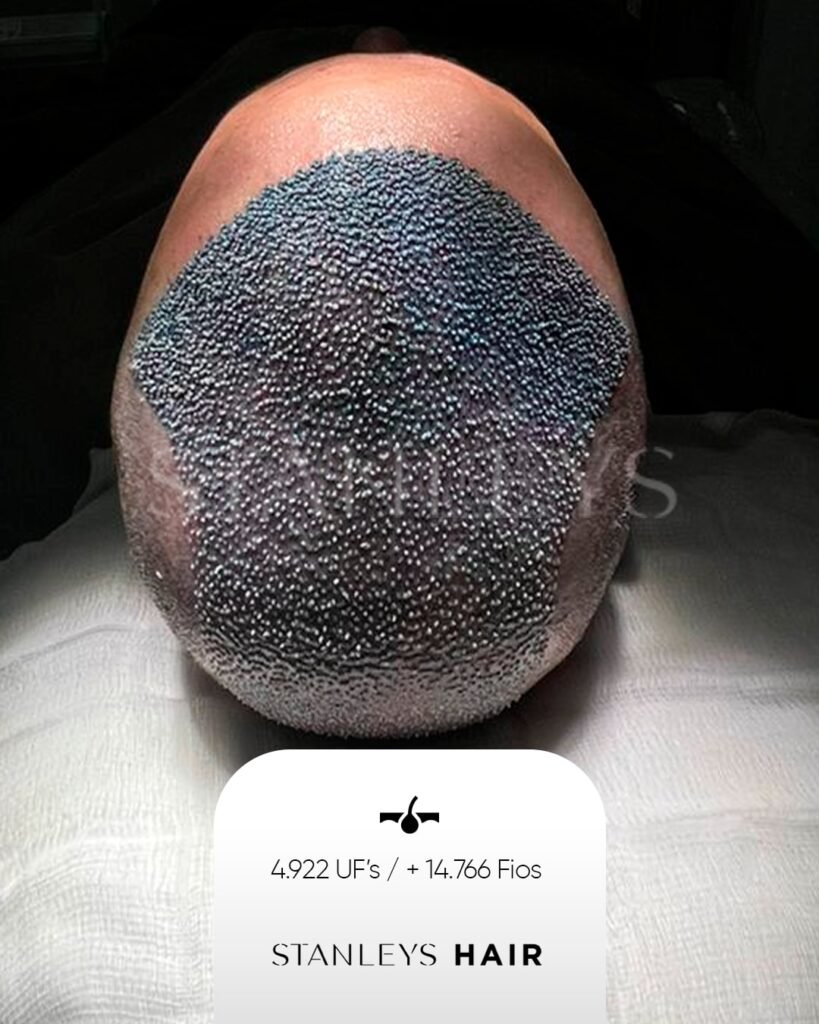The world's #1 in Hair Transplant has arrived in Miami!
With two decades of expertise in hair transplant and male aesthetics, we cater to demanding men looking for thicker and healthier hair. Your journey starts now.
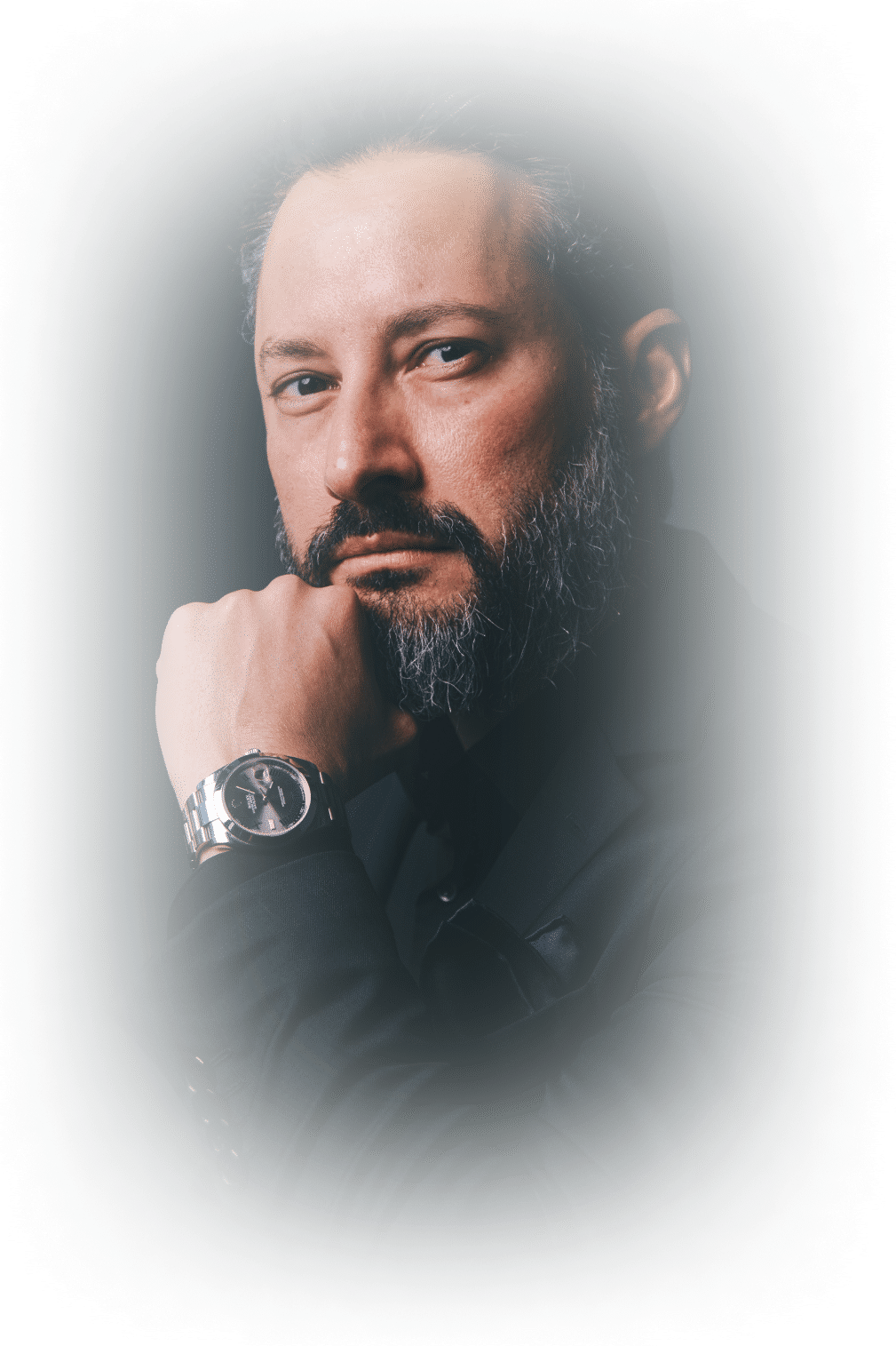
- No Pain
- No Scars
- Visibile Results in 4 months
- Natural Appearence
- Quick Recovery
- Satisfaction Guaranteed
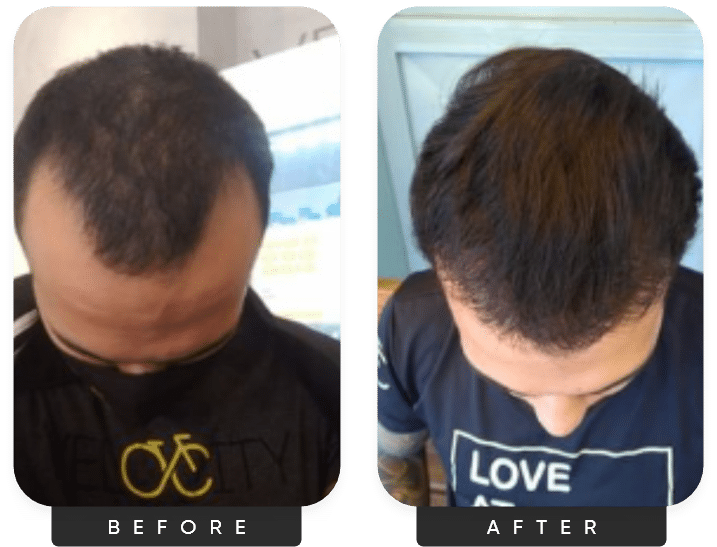
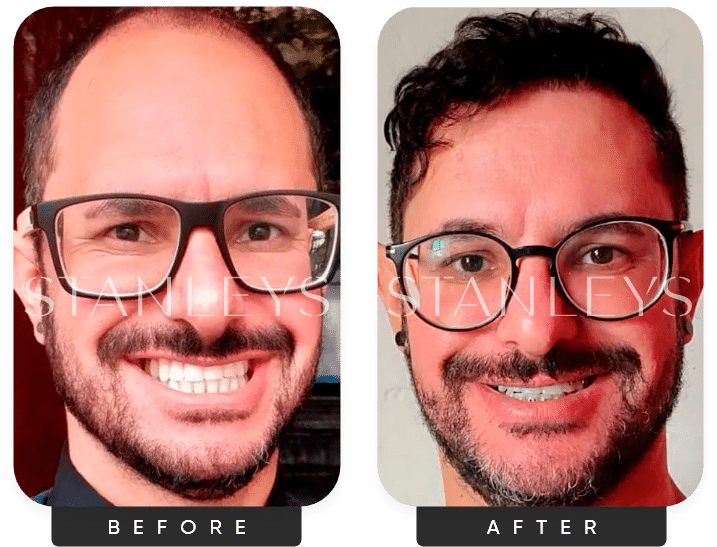
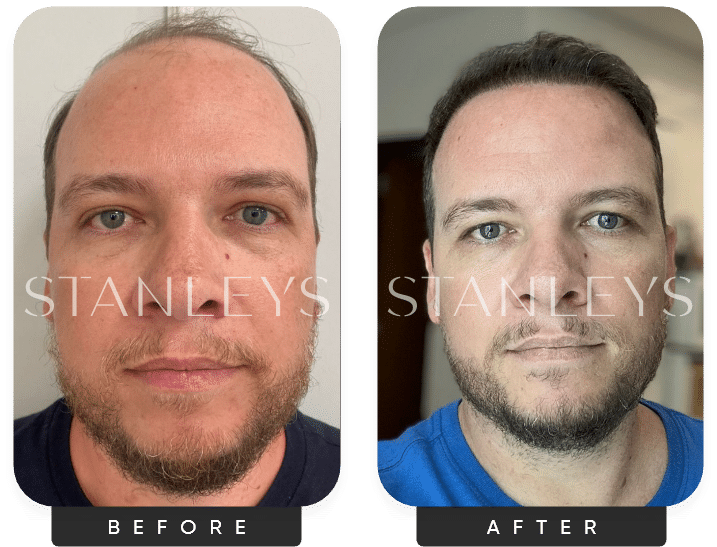
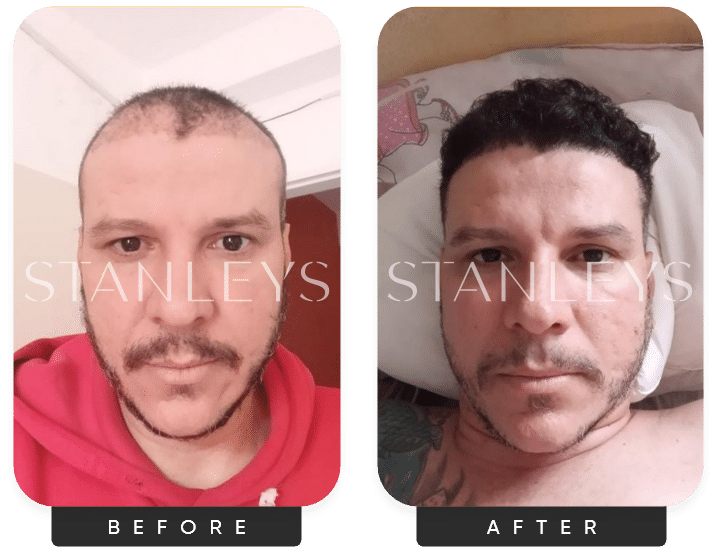
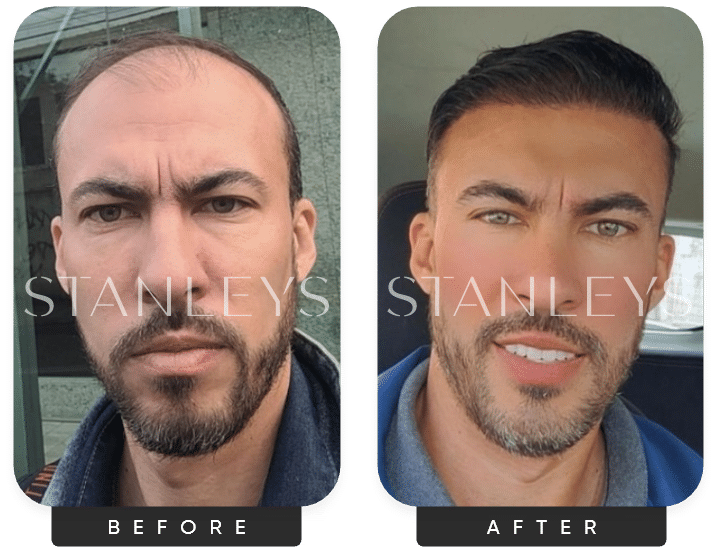
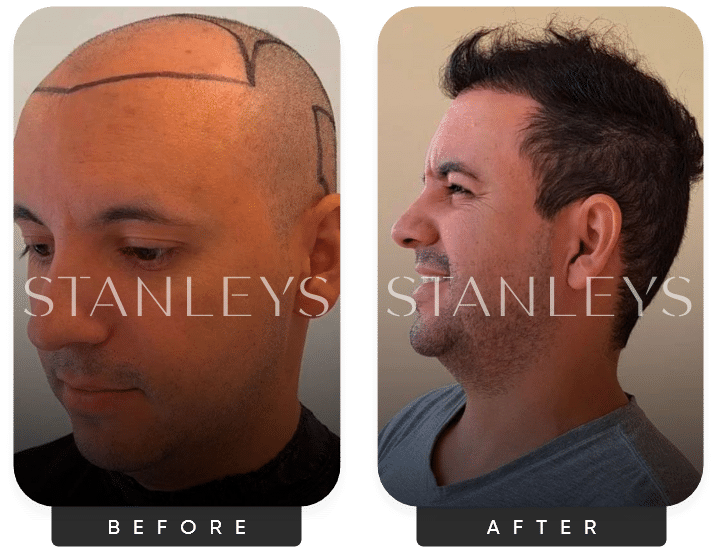


Are your receding hairlines growing? Meet Stanley's Hair Transplant
With over two decades of experience, we use the best equipment to perform the most advanced hair transplants in the world. Our commitment to quality starts from the first contact.
The process begins with a careful analysis. Our specialists will determine the degree of your baldness and the most appropriate plan for your case, guaranteeing personalized treatment.
You will then undergo treatment in one of our clinics. Throughout the postoperative period, you will be monitored daily by professionals, ensuring your comfort and safety.
Start your hair restoration journey today
No limit of follicles for your treatment
There are several hair transplant techniques. The FUT technique, for example, removes a strip of skin, which leaves a linear scar, that’s the “doll’s hair” you may have seen before. FUE, on the other hand, removes the follicles one by one, avoiding visible scars.
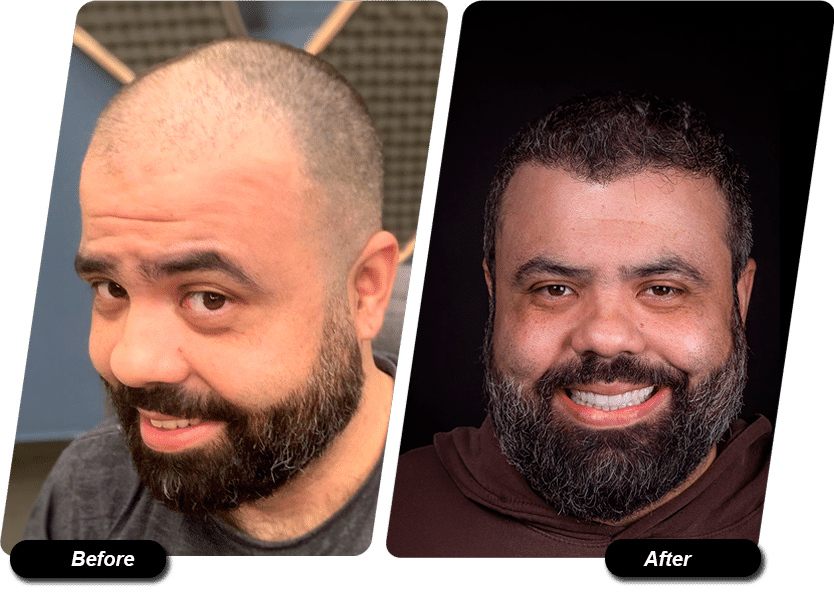
Are your receding hairlines growing? Meet Stanley's Hair
Here, we have developed an exclusive technique called IFUEMAX, which combines the best of both to guarantee maximum hair density:
- Trichotomy: shaving the head to facilitate follicular extraction.
- Extraction: removal of follicles from the donor area to the recipient area.
- Transplant: insertion of the follicles in an area between 10 and 13 in².
- 12 months of mesotherapy.
- 12 months of follow-up.
Talk to our experts
Through iFueMax we've democratized hair transplant. Check our numbers.

+60k
Customers Served

+20
Years of experience

+70
Clinics in the world

+141
Associated Doctors

+538k
Hours of hair surgery
Stanley Bittar Hair Transplant - Miami
If you are experiencing hair loss or baldness and live near the Miami area, visit our Miami location to receive a free, personalized evaluation and discover the best solutions for your hair loss.
Don’t miss this opportunity
In-person and video consultations available.
Our hair transplants have changed self-esteem of thousands of men.
For different degrees and types of baldness
Check out this video we prepared for you

1st grade
There’s little or no hair loss or hairline recession.

2nd grade
There’s slight hair loss near the skin between your ears and forehead (temples).

3rd grade
You have deep hairline recession around your temples, and your hairline may have an “M” or “U” shape.

4th grade
You have very deep hairline recession and a loss of hair at the top of your head (crown).

5th grade
Your hairline recession connects to the bald spot on your crown.

6th grade
The hair between your temples and crown is thinning or gone.

7th grade
You have no hair on the top of your head and a thin band of hair around the side of your head.
Take back control of your baldness and get rid of it for good with the leaders in hair transplants
- Flexible Payment Options & Exclusive Benefits – Click Here to Learn More
- Unlimited grafts and follicles
- Omnichannel support with WhatsApp
- Trichotomy: shaving the head to facilitate follicular extraction.
- Extraction: removal of follicles from the donor area to the recipient area.
- Transplant: insertion of the follicles in an area between 10 and 13 in².
- 12 months of mesotherapy.
- 12 months of follow-up.
Frequently asked questions
Extent of Hair Loss: Hair transplant is generally more effective for individuals with moderate to advanced hair loss, as there needs to be a sufficient donor area for transplanting hair follicles.
Stability of Hair Loss: It’s important that your hair loss has stabilized before considering a transplant. If hair loss is still progressing, it may be advisable to wait until it stabilizes to ensure the long-term success of the procedure.
Donor Hair Quality: The success of a hair transplant depends on the quality and density of the donor hair. Your surgeon will assess whether your donor area can provide enough healthy follicles for transplantation.
Health Status: Good overall health is crucial for a successful recovery. Conditions such as diabetes or immune system disorders may affect the healing process.
Realistic Expectations: It’s important to have realistic expectations about the results of a hair transplant. While the procedure can significantly improve the appearance of hair, it may not restore a full head of hair, and individual results can vary.
Age: While there isn’t a specific age limit, younger individuals may be advised to wait until the pattern of hair loss is more predictable. This helps in planning a more effective and lasting transplant.
Medical History: Your medical history, including any past surgeries, medications, and allergies, will be assessed to ensure that you are a suitable candidate for the procedure.
Commitment to Aftercare: Successful results also depend on your commitment to post-operative care. This includes following the surgeon’s instructions for cleaning, avoiding certain activities, and taking any prescribed medications.
Local Anesthesia: Hair transplant procedures typically involve the use of local anesthesia to numb the donor and recipient areas. This means that the patient remains awake during the procedure but should not feel pain in the treated areas.
Discomfort During Anesthesia Administration: The administration of anesthesia might involve a brief moment of discomfort, such as the sensation of a small needle prick. However, as the anesthesia takes effect, the treated areas should become numb.
Postoperative Discomfort: After the procedure, some patients may experience mild swelling, soreness, or discomfort in the treated areas. Pain medication and following postoperative care instructions can help manage these symptoms.
It’s essential to communicate openly with your surgeon about your pain tolerance and any concerns you may have. Keep in mind that individual pain thresholds vary, and what one person considers discomfort, another might describe as pain. Overall, advancements in techniques and anesthesia administration have significantly improved the comfort levels associated with hair transplant procedures.
Medication: Your surgeon may prescribe antibiotics to prevent infection and anti-inflammatory medications to reduce swelling and discomfort. It’s crucial to take these medications as directed.
Pain Management: Over-the-counter or prescription pain medications may be recommended to manage any postoperative pain or discomfort. Follow your surgeon’s guidelines on when and how to take these medications.
Avoiding Strenuous Activities: During the initial days or weeks, it’s essential to avoid strenuous physical activities, heavy lifting, and activities that could strain the scalp. This helps prevent complications and allows the grafts to heal properly.
Gentle Hair Washing: Your surgeon will provide specific instructions on when and how to wash your hair after the transplant. Using a gentle touch and following the recommended shampooing routine will help keep the transplanted area clean and promote healing.
Protection from the Sun: Direct exposure to the sun can be harmful during the early stages of recovery. Wearing a hat or using sunscreen to protect the scalp from UV rays is advisable.
Avoiding Smoking and Alcohol: Smoking and excessive alcohol consumption can hinder the healing process. It’s generally recommended to avoid these substances during the recovery period.
Moisturizing and Conditioning: Depending on your surgeon’s advice, you may be instructed to apply moisturizers or conditioning agents to the transplanted area to keep the skin hydrated and promote healing.
Follow-Up Appointments: Attend all scheduled follow-up appointments with your surgeon. These appointments allow the surgeon to monitor your progress, address any concerns, and ensure that the transplanted hair is growing as expected.
Avoiding Scratching or Picking: It’s important to resist the urge to scratch or pick at the transplanted area. Doing so can disrupt the healing process and potentially damage the grafts. Patience and Compliance: Hair transplant results take time to fully develop. Be patient and follow your surgeon’s recommendations diligently for the best possible outcome.
Our program, IFUEMAX, combines the best hair transplant processes, benefits and technologies in the world, guaranteeing a natural and long-lasting result.
Who is Doctor Stanley Bittar?
Stanley Bittar is an internationally renowned doctor who has stood out for 20 years for his innovative techniques in hair transplant, replicated in his network of clinics. Founder of the world’s largest network of hair transplant and therapy clinics, he’s a reference in integrated ecosystems in the education, health, beauty and technology sectors.
With a doctorate in Plastic Surgery from Cambridge International University and a master’s degree in Aesthetic Medicine from the University of Córdoba in Spain, his expertise guarantees high quality and safe treatments for his patients.
Your transformation starts here.
First assessment free with installment options up to 12x
- Unlimited grafts and follicles
- Complete follow-up program with 12 months
- Personalized Service
- Flexible conditions and benefits
- Leader in hair transplant all over the World
